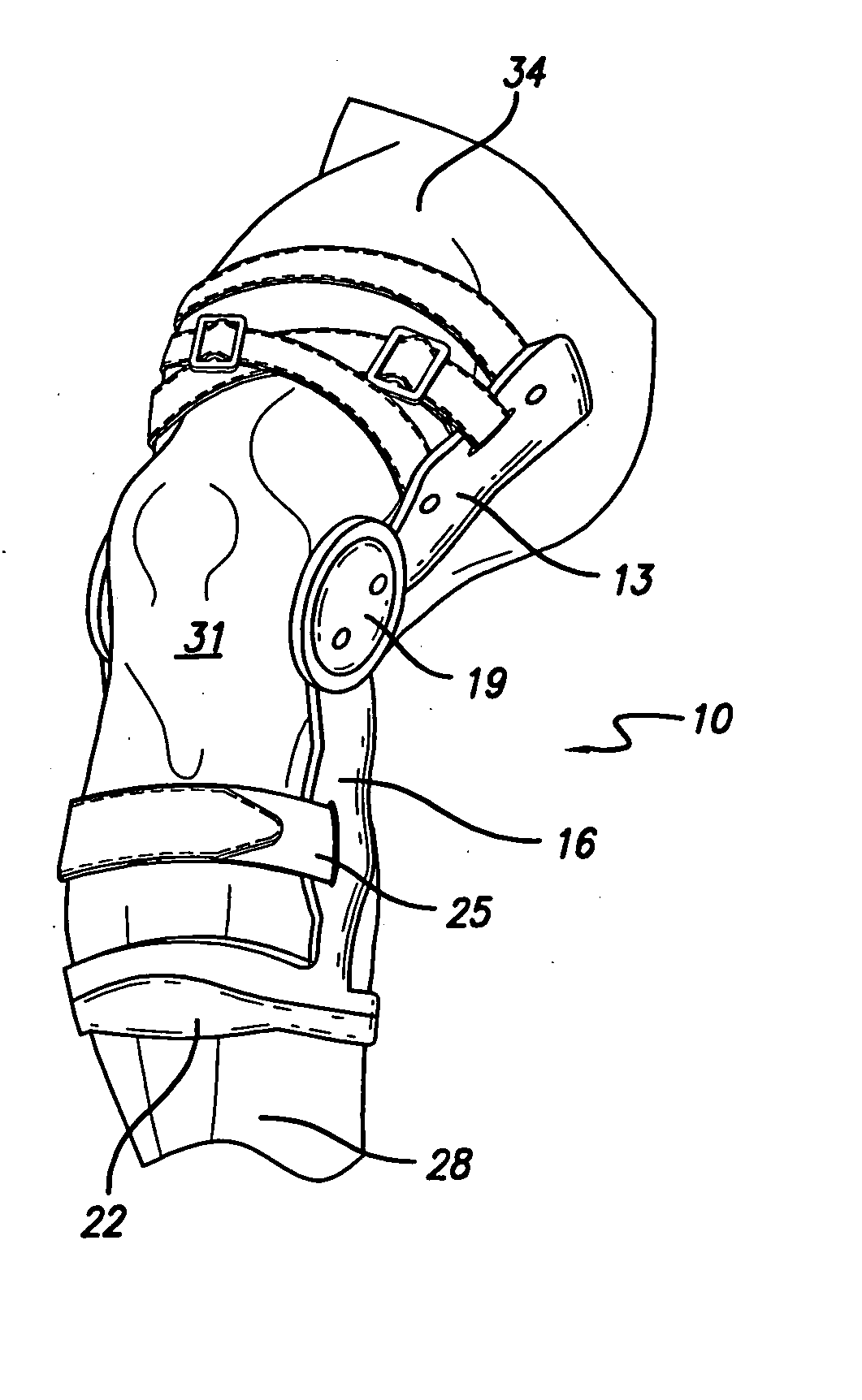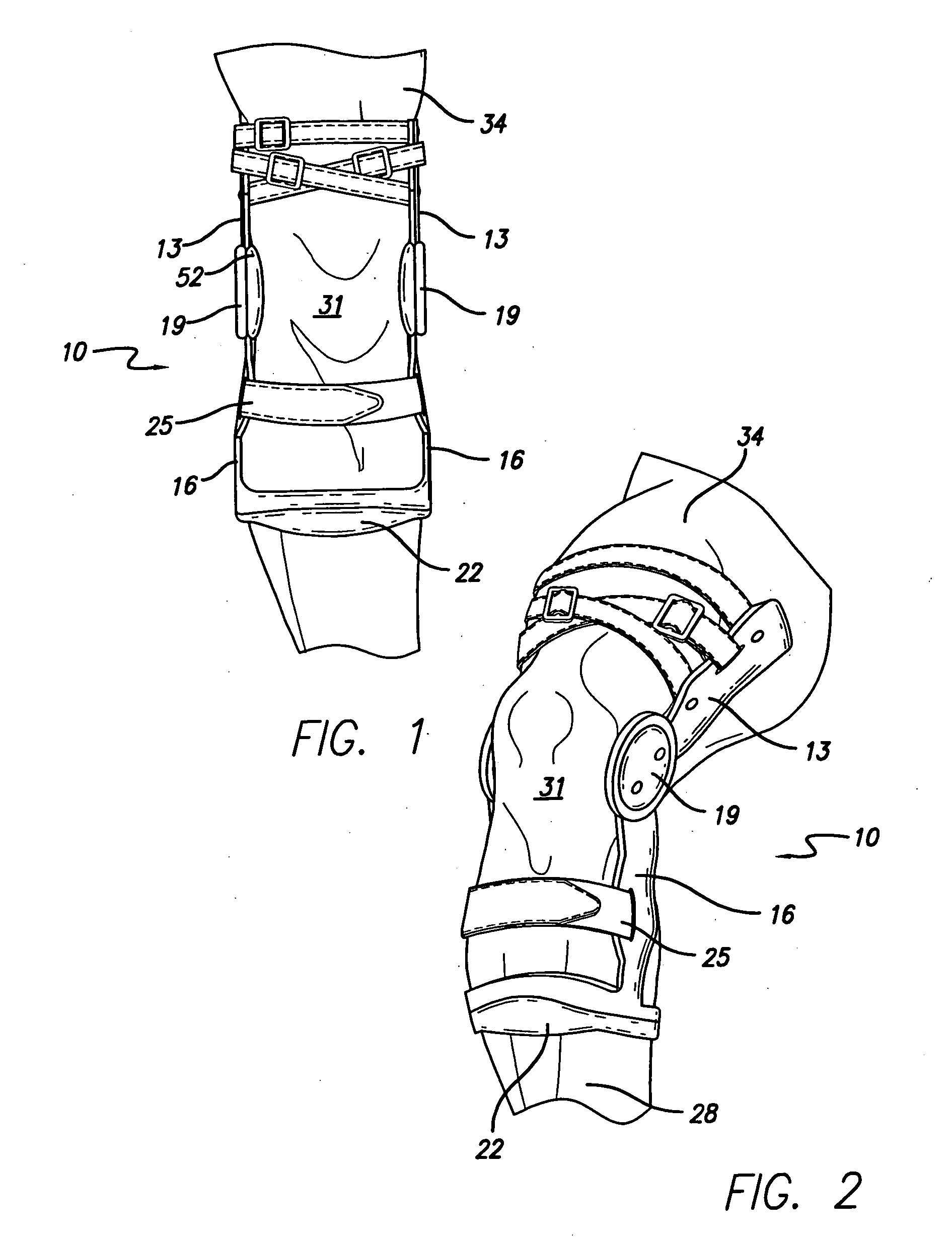Adjustable knee brace
a knee brace and adjustable technology, applied in the field of orthopaedic devices, can solve the problems of reduced muscle control, decreased knee stability, and human knee subject to a variety of stresses and strains, and achieve the effect of preventing hyperextension
- Summary
- Abstract
- Description
- Claims
- Application Information
AI Technical Summary
Benefits of technology
Problems solved by technology
Method used
Image
Examples
Embodiment Construction
[0031] The knee brace of the present invention provides numerous improvements over the prior art. For example, the brace contains at least one adjustable strap. The strap may be adjusted to ensure that the rigid thigh elements of the brace are correctly aligned with the long axis of the femur in the mid-medial and lateral lines. The adjustable strap also prevents hypertension in a changed thigh profile. The crossing straps can be adjusted so they fit a particular anterior thigh soft tissue profile and are equally tight in flexion and the rigid elements are not destabilized by soft tissue movement. Another advantage is grip, in terms of gripping the soft tissue of the user in to enable the brace to function effectively, and also to be able to provide skeletal grip in virtually all knee positions. Other features and advantages are described or will be apparent from the specification and claims.
[0032] Referring now to the drawings in detail, wherein like reference characters refer to ...
PUM
 Login to View More
Login to View More Abstract
Description
Claims
Application Information
 Login to View More
Login to View More - R&D
- Intellectual Property
- Life Sciences
- Materials
- Tech Scout
- Unparalleled Data Quality
- Higher Quality Content
- 60% Fewer Hallucinations
Browse by: Latest US Patents, China's latest patents, Technical Efficacy Thesaurus, Application Domain, Technology Topic, Popular Technical Reports.
© 2025 PatSnap. All rights reserved.Legal|Privacy policy|Modern Slavery Act Transparency Statement|Sitemap|About US| Contact US: help@patsnap.com



